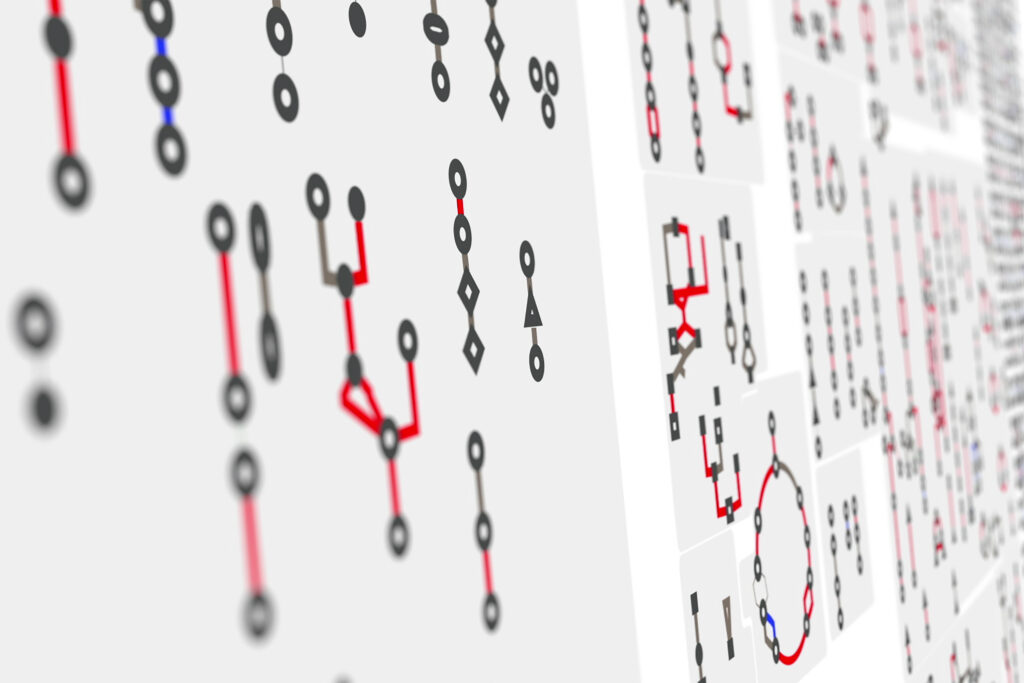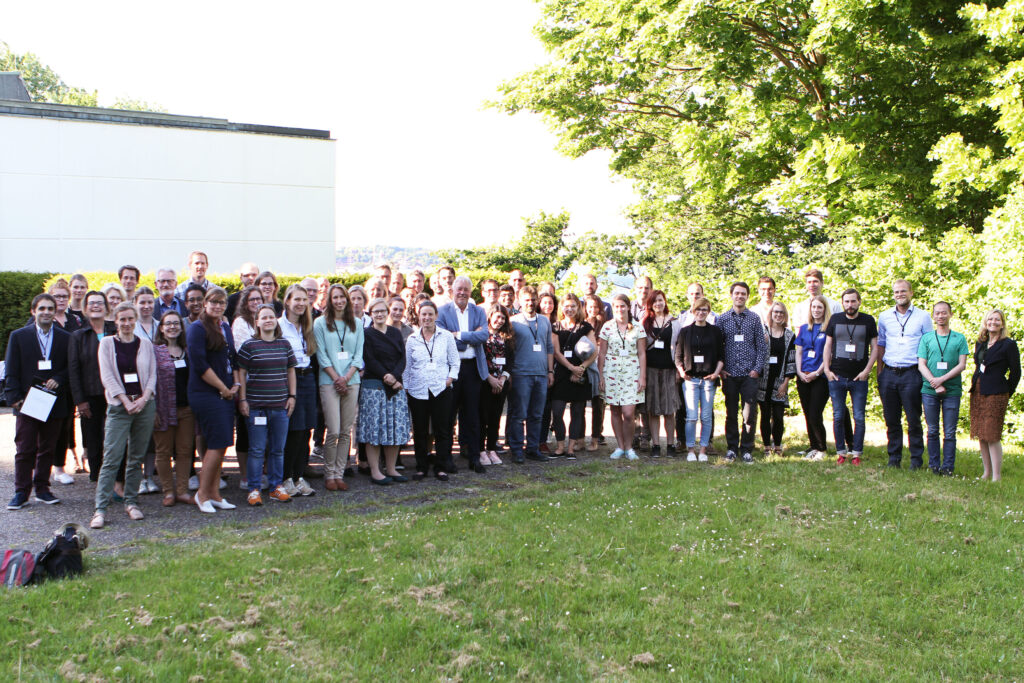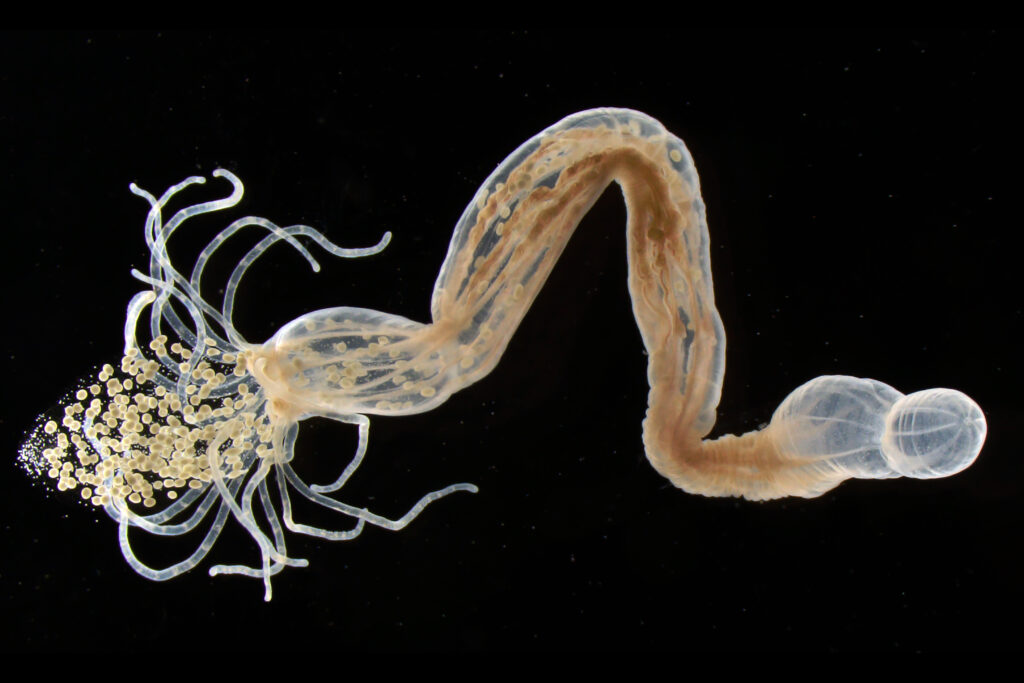Gut contractions influence the composition of the microbiome
Research team of the CRC 1182, Helmholtz Munich, and the University of Southern California demonstrates that altered fluid dynamics in the gut affect microbial colonisation
Spontaneous rhythmic contractions of the intestinal tract, also known as peristalsis, play an important role in enabling healthy gut function in the vast majority of living organisms. This intrinsic activity appears to be essential for the life and health of many animals, researchers suggest. It is caused by rhythmic electrical impulses generated by so-called pacemaker cells of the nervous system. In humans, a disturbance of this contraction pattern can lead to gastrointestinal diseases, which are also linked to a disturbed composition of the microbial colonisation of the intestine, also called microbiome. Until now, it was unclear why these spontaneous contractions developed and whether they are related to the microbiome.
A research team led by Professor Thomas Bosch from the Department of Cell and Developmental Biology at Kiel University was already able to prove in a previous research study that the intestinal microbiome supports the nervous system in controlling peristalsis. The research team from the Collaborative Research Center (CRC) 1182 “Origin and Function of Metaorganisms” in a new study with colleagues from Helmholtz Munich and the University of Southern California (USC) now changed perspective and investigated whether the contractions can in turn influence the composition of the intestinal microbiome. They recently published their results in the scientific journal eLife.
The Kiel researchers worked closely with a mechanobiologist and a mathematician who study the fluid physics of living systems. Together they hypothesized that the frequency of the contractions influences the fluid microenvironment near the tissue surface in which the microbes live in the gut or on other surfaces. Changes in this boundary layer could regulate the growth and composition of the microbes, the researchers assumed. To investigate the mechanisms involved, the Kiel research team used a simple model system, the freshwater polyp Hydra. Hydra not only has a well-defined microbiome on its body wall, the frequency and spatial distribution of which can be monitored experimentally, but also shows the characteristic spontaneous contractions of the body cavity, the function of which was previously unknown.
By combining microbiome analyses, in vivo flow analyses and mathematical modelling, the researchers were able to observe that the spontaneous rhythmic contractions of the body wall actually have an effect on the microbiome composition: an experimental reduction in the frequency of contractions caused a change in the microbial species composition on the intestinal wall.
Intestinal flow movements modelled
The intestinal walls of mammals are in contact with the liquid gut contents. There is a viscous boundary layer between the intestinal wall and the contents, which adheres to the intestinal wall to a greater or lesser extent depending on the flow velocity and influences the exchange of substances. This boundary layer is the reason why the exchange of substances on the surface of the intestinal wall takes place almost exclusively by diffusion. Nutrients and other chemical compounds are therefore passively transported towards and away from the surface. The research team has simulated the dynamics of this flow movements at this boundary layer in order to theoretically understand the effects of intestinal contractions.
“To do this, we applied methods from physics for the first time in microbiome research and developed theoretical models that can predict the flow behavior of the intestinal wall,” explains Dr Janna Nawroth from the Helmholtz Pioneer Campus in Munich. “These models showed that the flow velocity increases sharply during contractions, reducing the adhesion of the boundary layer. As a result of the fast laminar flow, the intestinal wall shakes off the viscous boundary layer at regular intervals before it can build up again after some time,” Nawroth continues. This provides evidence that spontaneous contractions of the body walls improve the transport of chemical compounds to and from the tissue surface.
Observations from the model organism confirm theory
In order to test whether and how the mixing and renewal of this boundary layer as a result of the contractions affects the microbiome, the researchers investigated the mechanism using the example of the hydra in a living organism. Their contractions of the entire body cavity are functionally comparable to the intestinal contractions of more complex organisms. Christoph Giez, a doctoral student in the Bosch research group, conducted a series of experiments: He slowed down the contraction pattern of the freshwater polyp experimentally and increasingly lowered the frequency by interfering with the animals’ day and night rhythms or chemical signals, among other things. The hydras were exposed to these different regimes for 48 hours each.
The research team then sequenced the genetic information of the microbial species present in the microbiome to detect changes in their composition. “We observed that a lower contraction rate and the resulting less frequent renewal of the boundary layer showed clear effects on microbial colonisation,” Giez summarises. “The slowing of contractions favoured microorganisms that thrive better in a more static environment. Bacterial species that are usually found in the barely mobile foot of the polyps now colonised the entire body of the animals,” CRC 1182 member Giez continues. The researchers assume that the lower exchange of substances in the boundary layer ensures that the microbiome in the entire organism adapts to the species composition of the more static foot region.
Intestinal motility important factor for health
The scientists were thus able to prove theoretically and functionally that a reduction in the frequency of spontaneous contractions of the body wall changes the flow conditions near the tissue surface and thereby modifies the composition of the microbiome. “Our results suggest that peristalsis is a necessary prerequisite for the regular exchange of essential substances at the intestinal surface,” concludes Bosch. “In this way, it likely helps to keep the microbiome in balance and thus shape and stabilise the interaction of host organisms and microbes as a whole,” the CRC 1182 spokesperson continues.
The new research results thus show how important intestinal contractions are for a stable microbiome and open up new perspectives for further research into links between peristalsis and disease development. “For the first time, we were able to establish a functional connection between the frequency of intestinal movements and a disturbed microbiome. In the future, we will also aim at the investigation of this mechanism at the metabolic level in order to better understand related possible causes of disease,” Bosch looks ahead.
Original publication:
Janna C. Nawroth, Christoph Giez, Alexander Klimovich, Eva A. Kanso, Thomas C.G. Bosch (2023): Spontaneous body wall contractions stabilize the fluid microenvironment that shapes host-microbe associations eLife First published: 03. July 2023
DOI: 10.7554/eLife.83637
Images are available for download:
https://www.uni-kiel.de/de/pressemitteilungen/2020/180-deines-mbio-hydra.jpg
Using the freshwater polyp Hydra as an example, the Kiel research team investigated how intestinal contractions affect the dynamics of flow movements at the boundary layer of the body wall.
© Dr Alexander Klimovich
https://www.uni-kiel.de/de/pressemitteilungen/2023/198-nawroth-giez-elife-shedding.jpg
Caption: The flow velocity increases greatly as a result of the contractions, causing the intestinal wall to shake off the viscous boundary layer (FBL) at regular intervals.
© Dr Janna Nawroth
https://www.uni-kiel.de/fileadmin/user_upload/old_news_images/2017/2017-368-1.gif
Caption: The research team was able to demonstrate a connection between the characteristic spontaneous contractions of the body wall and the composition of its microbial colonisation.
© Dr Alexander Klimovich
Contact:
Prof. Thomas Bosch,
Spokesperson CRC 1182
„Origin and Function of Metaorganisms“, Kiel University
Phone: +49 (0) 431-880-4170
Email: tbosch@zoologie.uni-kiel.de
More information:
Cell and Developmental Biology, Zoological Institute, Kiel University:
www.bosch.zoologie.uni-kiel.de
Bioinspired Motion Lab, Department of Aerospace and Mechanical Engineering,
University of Southern California:
sites.usc.edu/kansolab/
Mechanobiology Lab, Helmholtz Pioneer Campus, Helmholtz Munich:
https://www.pioneercampus.org/themenmenue-links/about-us0/principal-investigators/janna-nawroth/index.html





